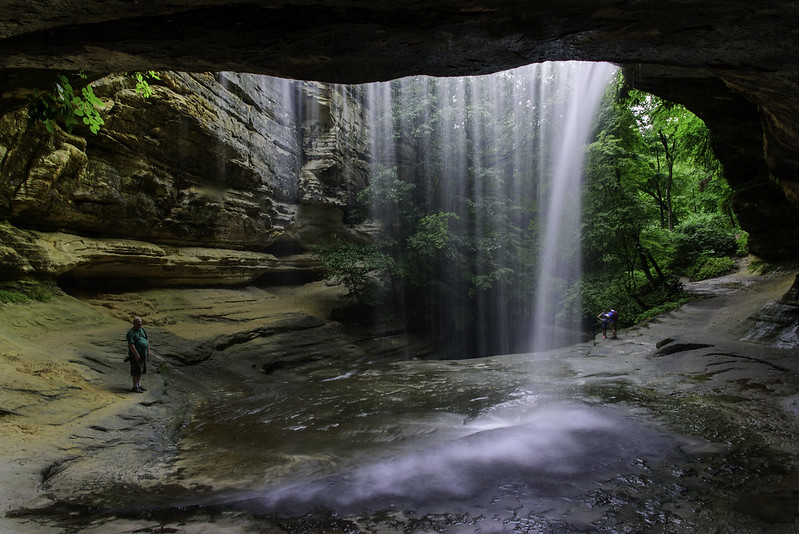
After another week of very cold weather, the temperatures are set to climb above 40 for the next few days, so the icefalls of Illinois' Starved Rock State Park won't be here for much longer. I figured after the single digit temperatures this week, the falls would be frozen solid, and they were. Ever changing, they're never the same twice, even though this was my forth trip to the frozen falls this winter, it's still exciting to enter each canyon to see the ice formations.

On my last trip, I wasn't able to get to Kaskaskia Canyon because water from the melting snow filled the canyon floor. This time, the creek was still frozen solid, providing a good surface to walk on. "Good" meaning solid, but pretty much solid ice all the way. The pathways at the park were once packed snow, but that turned to very slick ice. Hiking some trails today without ice cleats was not only impossible, but very dangerous.

At this time of the morning, I was the only person in these canyons, so it's difficult to see how tall the waterfalls are because there are not people in the image for scale. The waterfall engulfing the logs is about 12 to 15 feet high. Nowhere near the tallest in the park, but certainly an interesting combination of ice, rock, and logs. The warm weather will certainly take it's toll on the icefalls over the next few days, but first, the creeks will begin to melt and flow, making it difficult to access some of these winter sculptures.
















































